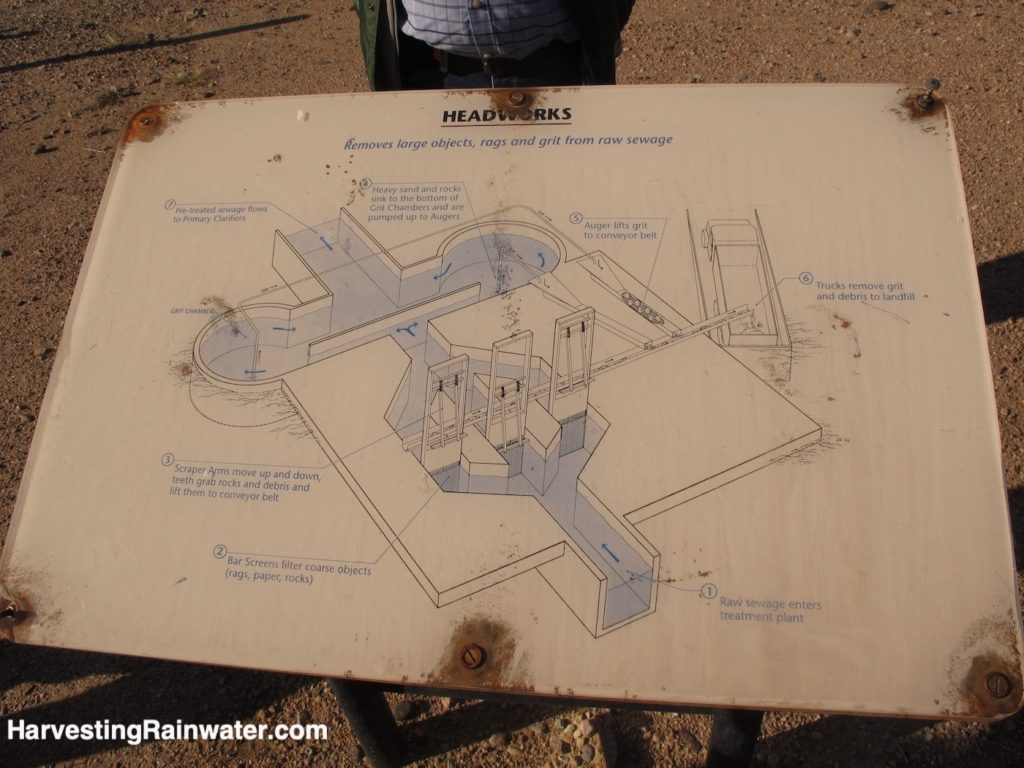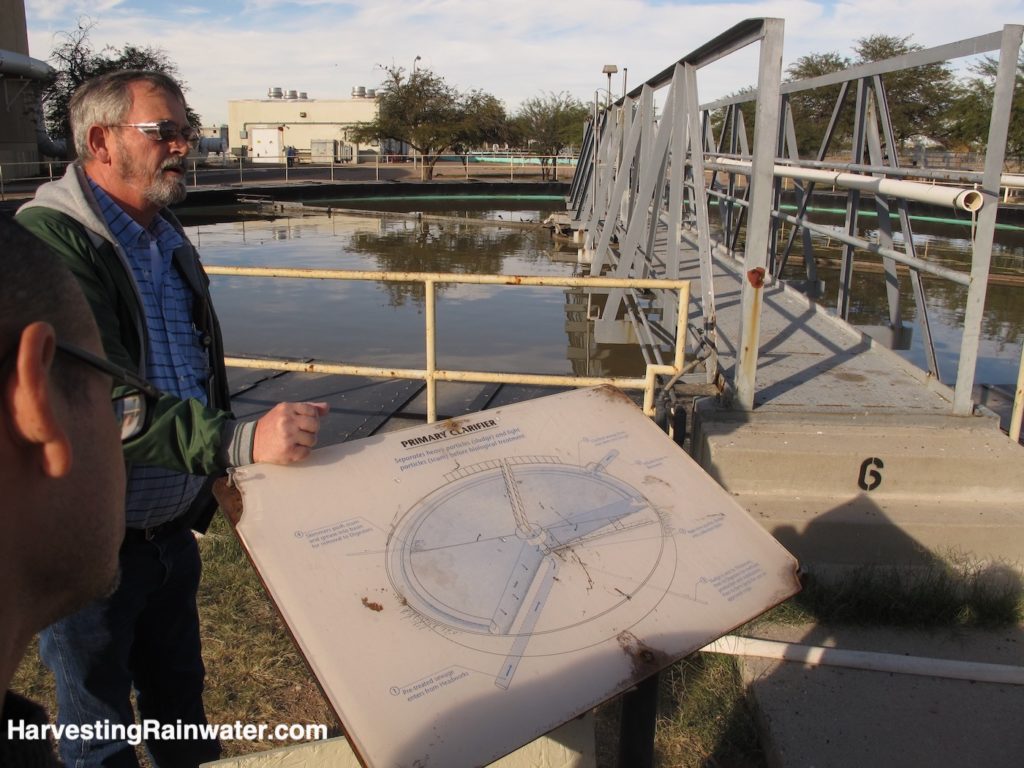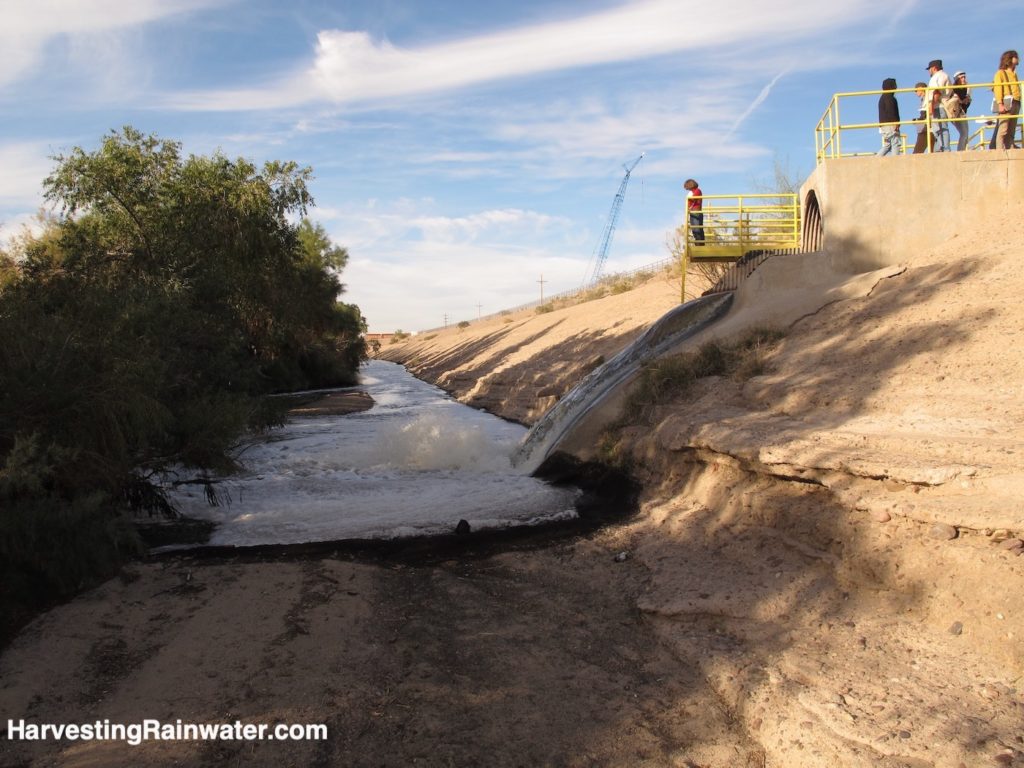Tres Rios Water Reclamation Facility
These facilities receive, mechanically & chemically treat, and dispose over 62 million gallons per day of sewage from the metropolitan Tucson sewage system. They never shut down, because they can’t, the sewage flow keeps coming in.

Photo: Brad Lancaster, 12-2011
If you live or work in Tucson, you must tour this site in person.
Most people have no idea where the things they throw down their drain go, let alone how that is dealt with at the downstream end.
The facilities are extremely impressive, complex, and energy intensive. And it’s a great tour!
You must experience it, in order to begin to grasp it.

Photo: Brad Lancaster 12-7-2011
The sewage water treated at the facility is used three ways:
1. It’s discharged into the Santa Cruz River to support its riparian ecosystem and wildlife, along with river-side recreational uses, and recharge groundwater.
2. It’s pumped into a network of “reclaimed water” lines throughout Tucson to parks, schools, and golf courses to irrigate turf and other landscaping.
3. It’s pumped into the Sweetwater Wetlands to support its wetland system, recharge groundwater, and pump into “reclaimed water” lines.

Photo: Brad Lancaster, 12-7-2011
After touring the site, I was very motivated to do a better job of harvesting and treating water for free with highly-productive living systems higher in the watershed
For example,
• instead of directing stormwater to the streets where it enters the sewer system (and then becomes sewage) via sewer access holes; why not keep rainwater on-site for beneficial use, and direct street runoff stormwater to street-side and in-street water-harvesting landscapes of perennial native food-bearing vegetation that then shades and cools the street?
• Instead of directing lightly-used sink, shower, and laundry water (greywater) to the sewer; why not direct that greywater via gravity to irrigate an adjoining and productive home/school/business landscape where the greywater can provide free on-site greywater irrigation in times of no rain?
• Instead of defecating and urinating in drinking water (which is plumbed to our toilets), why not utilize composting toilets so you crap in the soil-based carbon cycle instead of crapping in the drinking water of the hydrologic cycle?
This way the fully-composted human waste can provide a safe, fertile, and free on-site soil amendment—a resource. Instead of pooping into, and transforming, drinking water into sewage—which then needs costly treatment to get the poop back out of the water.
Such on-site harvests sure would make for a richer, more hydrated, and fertile community. And a far more resilient community, especially if the power were to go out or if the downstream treatment plant temporarily shut down.
Where:
7101 N Casa Grande Hwy, Tucson, AZ 85743
32.34012716331728, -111.06840562533007
To schedule a tour:
Fill out the online Tour Request Form;
or contact Mary Ann Estrada by phone at (520) 724-6185 or via email at MaryAnn.Estrada@pima.gov.
This location is included in the following tours:
See the new, full-color, revised editions of Brad’s award-winning books
– available a deep discount, direct from Brad:

Volume 1

